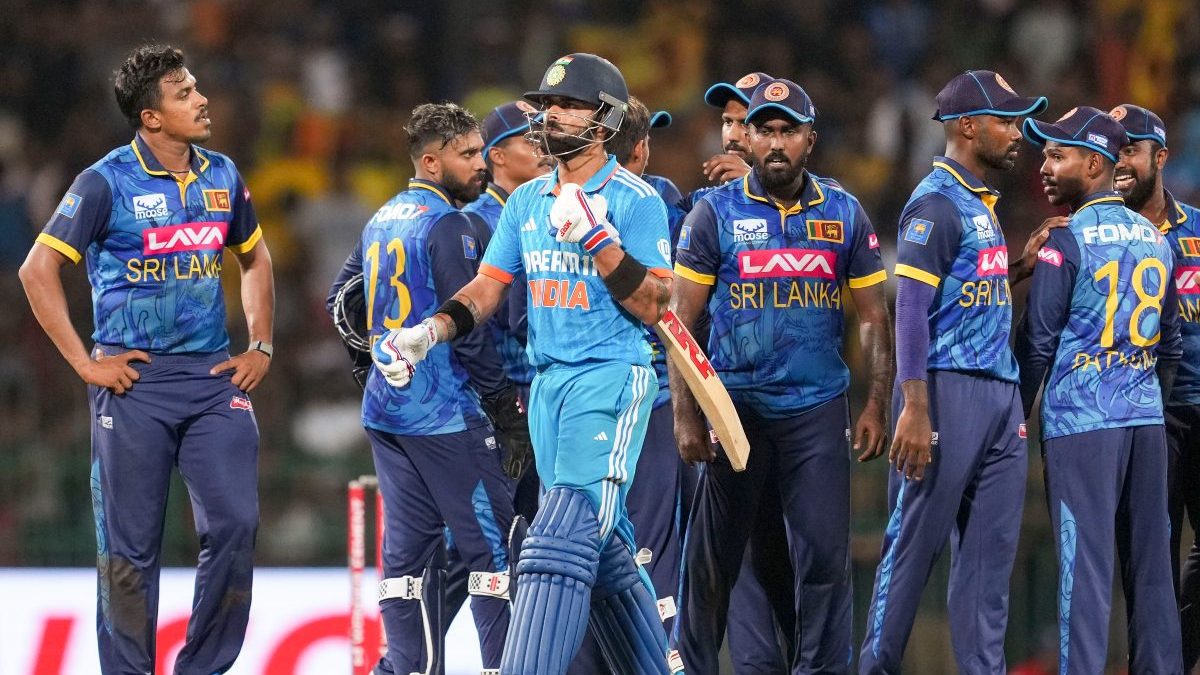As surrenders go, this was tame. Abject. Complete and total. India went into the One-Day International series in Sri Lanka as the overwhelming favourites, at full strength in batting bar none and only missing Jasprit Bumrah from their line-up. Sri Lanka were in disarray, having failed to qualify for next year’s Champions Trophy and under a new captain who had just overseen a depressing 0-3 hammering in the preceding Twenty20 International series.
The contrast between the two limited-overs showdowns couldn’t have been starker. In Pallekele, Sri Lanka tumbled from one staggering collapse to another, throwing away positions of tremendous promise as they allowed the pressure, real and imagined, to get the better of them. Like the hosts, India too were helmed by a new skipper, but where Charith Asalanka couldn’t rouse his troops into battle, Suryakumar Yadav found a way around every crisis.
It was, therefore, hardly fanciful to expect an encore in the ODIs. Rohit Sharma and Virat Kohli were back in the fray, recently retired from T20Is and refreshed after a month off from the game. As were KL Rahul and Shreyas Iyer, as well as left-arm wrist-spinner Kuldeep Yadav. India did have a few new faces, but the overriding theme was storied accomplishments and immense experience. If ever there was a battle of unequals…
Sport has a way of cocking a snook at predictions, at favouritism. It sometimes makes a mockery of rankings and expectations, but over a period of time, the element of surprise disappears and normal service is restored. Not this time around.
Impact Shorts
More ShortsThe first warning bells came in game one at the R Premadasa Stadium, the scene of India’s famous Asia Cup triumph last September. On that occasion, riding on Mohammed Siraj’s extraordinary six for 21 , India shot the hosts out for 55 in front of a stunned full house; this time, India crashed and burned and barely managed to come away unscathed, securing a tie as they replied to Sri Lanka’s 230 for eight by levelling that total when they lost their last wicket.
At the time, it was tempting to write off their travails, batting second, against the turning ball to rust. After all, India’s last ODI assignment was in December last year, so it was understandable that they would take a little time finding their feet. Sri Lanka’s versatile and extended spin attack used its familiarity with the conditions to lure India to their doom, though it was chastening that Asalanka, a very part-time offie, had accounted for three wickets. Surely, by the time of the second ODI, India would show who the boss was?
Evidently not. In a script that mirrored the first game, Sri Lanka rallied from 136 for six to post 240. India again got off to a pearler through their captain and Shubman Gill, racking up 97 in no time, when the collapse began. By the time it ended with Arshdeep Singh’s comical runout, India had ended up 32 short . This time, the orchestrator of their downfall was a little-known leggie, Jeffrey Vandersay, who was only drafted into the squad at the last minute because senior leg-spinner Wanindu Hasaranga was out with a hamstring injury. Before you could say Vandersay, he had picked up six wickets including some of the biggest names in world cricket.
India’s frailties against spin on slow tracks now stood ruthlessly exposed. True, they did have the worse of the batting conditions, the ball doing funny things under artificial lights. But how could that excuse a meltdown of epic proportions. Aren’t these the very conditions in which India’s batters cut their teeth in competitive cricket? Where was the use of the feet? Where was intelligence and commonsense? Where was bravery and boldness? Where was the response to surely what must have been inspirational words from Gautam Gambhir, the new head coach who was an outstanding player of spin on even minefields in his halcyon days?
By the time of game three, India’s hopes largely revolved around winning the toss and batting first. Rohit called wrong for the third game in a row and a familiar tale of woe unfolded with the outstanding Dunith Wellalage becoming the first Sri Lankan to take two five-fors against India, at the same venue. With his accurate and honest left-arm spin, interspersed with deliveries that went on with the arm, the 21-year-old displayed an admirable maturity way beyond his years. India went in the opposite direction, a 110-run pounding leaving Rohit livid, though he was composed enough in the aftermath of the disaster to admit that his team had been outplayed and that there was no shame in accepting that.
Rohit also pointed out that one series loss was not the end of the world. He couldn’t be truer, especially considering India are unlikely to be faced with these conditions, or bowlers of such quality in these conditions, anytime soon. But that shouldn’t be a huge consolation. For a while now, India’s vulnerability on helpful surfaces against even modest spinners has been obvious; the events of the last week have only served to reaffirm that truism.
Gambhir’s first outing with the side was a mixed bag – 3-0 in the T20s, and 0-2 in the ODIs. If he didn’t know earlier that the job of India’s head coach came with the unexpected and with massive attendant pressure, he does now. In the immediate future, he has ten Tests to plan for between September and January, including five in Australia. This ODI debacle will be forgotten long before the first ball of the packed Test calendar is bowled in Chennai against Bangladesh on September 19. But the lessons must not be forgotten, otherwise every time they come to Sri Lanka for 50-over games, it will only be on a wing and a prayer.
)